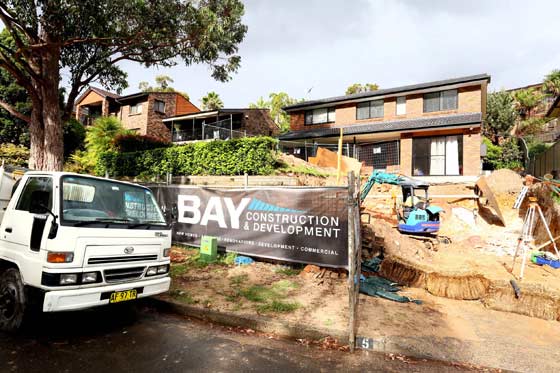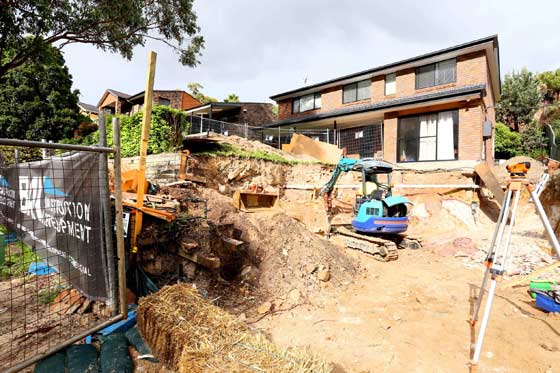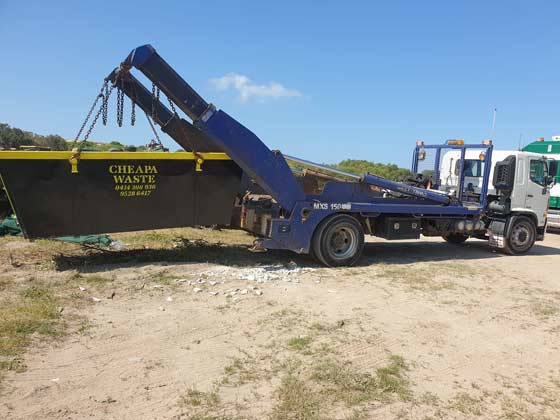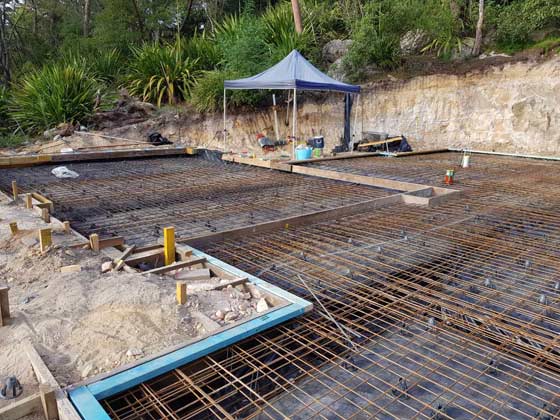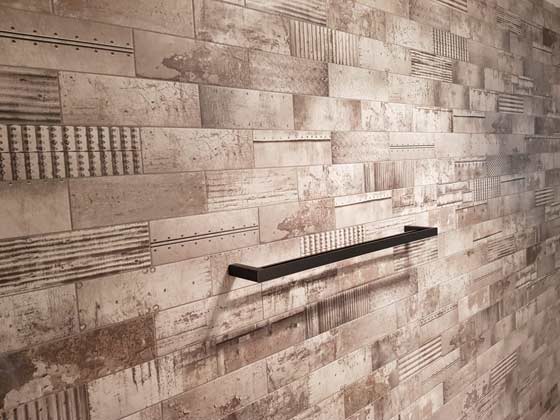Having a custom home built is an exciting endeavour. You may be wondering what the process looks like and what you might need to prepare before your build starts. Follow this quick guide of things to consider when preparing to build a home or do an extensive renovation in New South Wales.
Design Considerations
The sky’s the limit when it comes to getting the features that you want for your custom home. However, there are a few things that may impact the design including:
1. NSW Building Restrictions.
The importance of choosing the right builder becomes apparent when it comes to identifying and understanding those building restrictions.
Experienced builders understand zoning regulations for various residential lots, and they have contacts with architects who can help you to properly document your building plans.
2. The Landscape
The shape of the lot and the terrain may impact the design. For example is the land on a hill or on rocky terrain? This may make the building process more complex, however talk to your local builder as they will have experience with the local terrain.
Many of today’s construction projects are completed as joint efforts between builders and designers. These design-build projects allow prospective property owners to find an appropriate lot for their anticipated home design or to make necessary modifications to their home plans to fit an existing lot.
3. Environmental Factors
Environmental concerns are some things that your design-build team encounter when building on lots in NSW.
Government officials and residents are committed to safeguarding the region’s natural resources, and some prime building lots are located in areas that are protected by environmental regulations. For these lots, you’ll need to comply with sustainable building practices if you’re allowed to build on them at all.
4. Budget
The budget will determine the project size and scope, understanding this at the beginning is essential before planning can begin. Incorporating a buffer in the case of unexpected expenses or last minute changes could also be something to consider as part of the planning. Unexpected expenses can mean the difference between getting the furnishings and fixtures that you want for your space and settling for second-best options. Your builder can look at your proposed home design and evaluate its placement on your lot.
The builder can determine if the lot requires extra grading or other engineering activities to make it suitable for your new home. Understanding these lot preparation activities from the beginning is essential for understanding the total cost of the project.
5. Plumbing
If you are buying a new property or land you need to understand where sewer lines and drains are as this may impact where you can build and how you landscape.This should be included as part of the contract, but check with your solicitor or conveyancer to make sure this is covered.
6. Sustainable living
Many people want to take sustainable living to the next level with an off-the-grid lifestyle. Local laws support clean energy capture for homes, and photovoltaic systems (solar power) are very popular in sun-drenched NSW. The building design will impact where solar panels can be placed so again this is something that should be discussed at the first meeting with your builder.
Gaining Council Approval
Whether you’re building a custom home in NSW or tackling a large renovation project, you’ll need to get approval from the local authorities. Local municipalities have long-term goals for NSW communities. To ensure that those strategic plans are accomplished without a hitch, local governments require builders to obtain permits to begin work on their construction projects.
Residential construction projects fall under the categories of:
- Local Development
- Complying Development and
- Exempt Development.
Local Development
Local Environmental Plans (LEPs) are the resources that local officials use to control development in NSW. They guide the way that land is used and the quality of work that’s done to improve property. Some building projects fall under the category of Local Development, which means that builders must obtain consent under LEPs prior to starting work.
Complying Development
Most custom home building projects are considered to be Complying Development initiatives. Local authorities realise that most of these building projects are fairly straightforward. The local codes are known, and reputable builders are well-versed in following them.
As long as your building project’s plans are formatted properly and contain the relevant information, they can be fast-tracked for approval by the government or a third-party certifying agency. To gain approval through the Complying Development programme, your plans will likely include information about housing code compliance, tree removal and protection, and swimming pool specifications.
Exempt Development
Some renovation projects can be accomplished without approval since they only minimally impact surrounding communities. These Exempt Development projects can include building a patio, paving a driveway, or installing rainwater tanks on your property.
Take a look at the NSW Planning Portal Website for more information.
Coordination Amongst Trades
After you’ve chosen your lot and received approval for your building plans, the real fun begins. The basic building process has been around for thousands of years. Contemporary contractors have just adapted it to support the installation of modern conveniences such as heating and cooling systems.
Before builders start construction projects, they line up trades people who specialise in completing various parts of a house. This will also include services such as waste removal, plumbing, electricians and roofers. The coordination amongst trades is fairly fixed, and there’s not much overlap when it comes to completing construction tasks.
Cheapa Waste Skips (pictured above) is one of the local Sutherland Shire companies we work with.
Bay Construction and Development is proud to work with a range of local Shire trades companies from skip hire to plumbers and electricians. We work with companies that are local, reliable and produce quality work. Coordinating all these different trades, means the client can relax knowing that everything is being managed on time and in the right order.
Building a home from scratch
Here are the 10 steps that you can expect to see when you watch a general contractor build your custom home from scratch.
1. Lot Preparation
If you’re blessed with a wooded lot, the builder will hire a land-clearing crew to remove some of those trees to make room for your new home. If extra grading is needed, it will happen during the lot preparation phase. Other important lot preparation activities include digging up and levelling areas for your home’s foundation and laying down utility supply lines. If a basement is part of your house plans, an excavation contractor will dig out the area prior to pouring a foundation.
2. Laying the Foundation
Concrete contractors mix concrete and skilfully pour it over steel rods to create your home’s foundation. You’ll either have a slab foundation or a crawl space foundation. As tough as concrete is, the material can deteriorate quickly when regularly exposed to excess water. To avoid this, concrete contractors treat finished concrete foundations with a waterproof coating that seals out moisture.
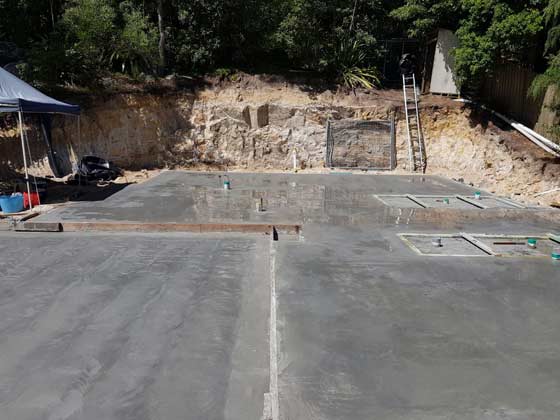
3. Framing
Framing crews usually show up at construction work sites after a local official inspects and approves the foundation. Framers install your home’s floor joists, subfloors, and studs for walls and the roof. They finish by installing windows, siding, and roof shingles.
4. Installing Plumbing and Electrical Systems
Comforts such as indoor plumbing and electricity mark the difference between a primitive shelter and a modern home. After your home’s siding and roof have been installed and its interior is watertight, plumbers and electricians show up at the work site to install pipes, wiring, and HVAC ducts.
5. Installing Insulation
Insulation is needed to keep your home cool in summer and warm in winter. It comes in different ratings that are based on the thickness and density of the insulation material. Popular types of insulation include spray-in foam, batt, and loose fill. Contractors lay insulation in walls, basements, and attics.
6. Hanging Drywall
When you look at a home’s interior walls, you are admiring its drywall. Sheets of drywall are screwed to wall studs and covered in drywall compound. After the walls dry, contractors sand, prime, and paint the walls.
7. Installing Interior Trim
Interior trim provides design details that make a home special. Besides installing window sills, doors, and baseboards, interior trim contractors nail up crown moulding and wainscoting according to your design plans. The installation of stair railings, cabinets, and countertops are also done during this phase.
8. Installing Exterior Finishes
Curb appeal is the first thing that guests see when they pull into your driveway. During the exterior finish phase, contractors pour concrete for driveways and patios and establish your yard’s landscaping.
9. Installing Fixtures
Contractors install shower stalls, bathtubs, and toilets during the fixture installation phase. This is also the time when they’ll install your home’s heating and cooling unit, electrical panels, and light switches.
10. Installing Flooring
Contractors leave flooring installation as the final step of the construction project to avoid getting carpets soiled or hardwood surfaces marred. If you have hardwood floors, you’ll want to ask the contractor about the items that you’ll need to clean them.
Living Plans During The Build
If you are planning a significant renovation or new build then you will likely need to find temporary accommodation. This is another thing to consider when looking at your budget.
Options may include:
- Staying with family or friends
- Airbnb
- Local hotel or motel
- Serviced Apartments
- Short term rental lease
- Storage and Moving
Again if you are doing a significant build you will likely need to remove all your belongings from the property. Find a storage company that offers full-sized units that you can rent on a month-to-month basis. Check for ones that are climate controlled, secure, and have on-site management.
As a courtesy, let your neighbours know about the build and that you might be staying elsewhere for a few months.
Conclusion
NSW is known for its dramatic coastlines, sunny weather, and friendly residents. It is no wonder that people from all over the country decide to make it their home. With careful preparation and planning, you can have that renovation or build your dream home!
Bay Construction and Development are experts at custom builds, so if you are planning your new home give us a call and we can help you start the process.

